Solomon Islands pole-and-line skipjack tuna

Location & History
Pole-and-line fishing has been practiced in the Solomon Islands since the 1970s. During the 1980s and 1990s, the Solomon Islands pole & line fishery supported one of the largest pole & line fleets in the Western Central Pacific Ocean. Following its heyday, the fishery suffered a reduction in pole & line effort due to the introduction of purse seine gear. In the present day, the National Fisheries Development Board has re-established a pole & line fishing fleet.
How is the Tuna Caught?
All the skipjack tuna from this fishery is caught using traditional pole-and-line methods, using one hook on a line attached to a pole, catching one fish at a time. Once a school of tuna has been located, the boat sprays water onto the surface of the ocean to mimic the movements of small fish, which attracts tuna over to the boat. Fishers use live bait in the water to start a tuna feeding frenzy. The crew lower their lines into the water and during the frenzy, tuna will catch onto the hooks. The tuna is hauled onboard, where it detaches from the hook, and the line is thrown back into the water to start again. The method is highly labor intensive with a crew of over 35 on each vessel. The fishery is very selective, which means it catches only skipjack or yellowfin tuna. Non-target species (also known as bycatch) are animals that the fishery doesn’t want to catch, such as dolphins, turtles or sharks. The use of a single hook and line per fisher means that there is very little bycatch, and because fishing takes place at the surface of the ocean, there is virtually no negative impact on different marine habitats.
Unique Features
This fishery has historically had very high levels of local employment. In the 1980s, Solomon Islanders made up 50% of crews, and in the early 1990s this increased to 90%.
Gallery
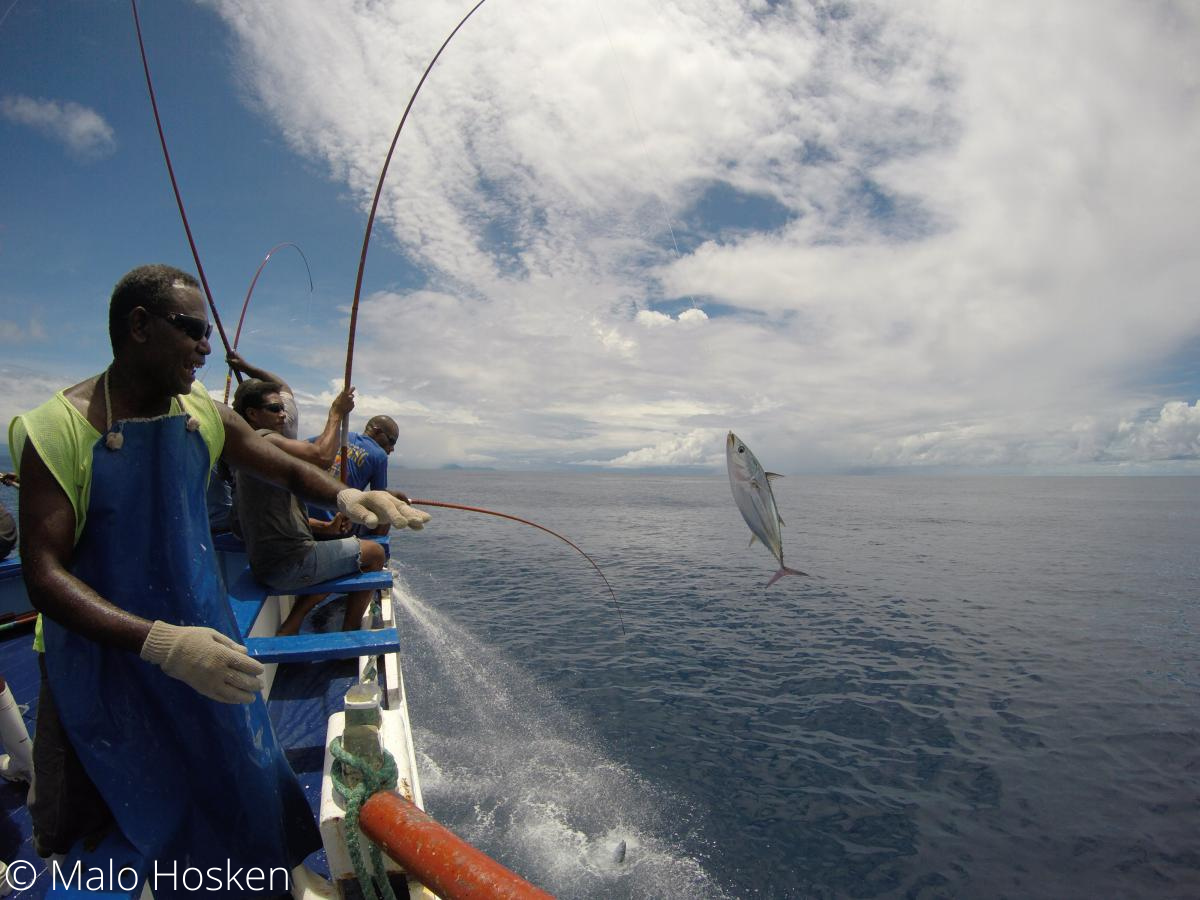
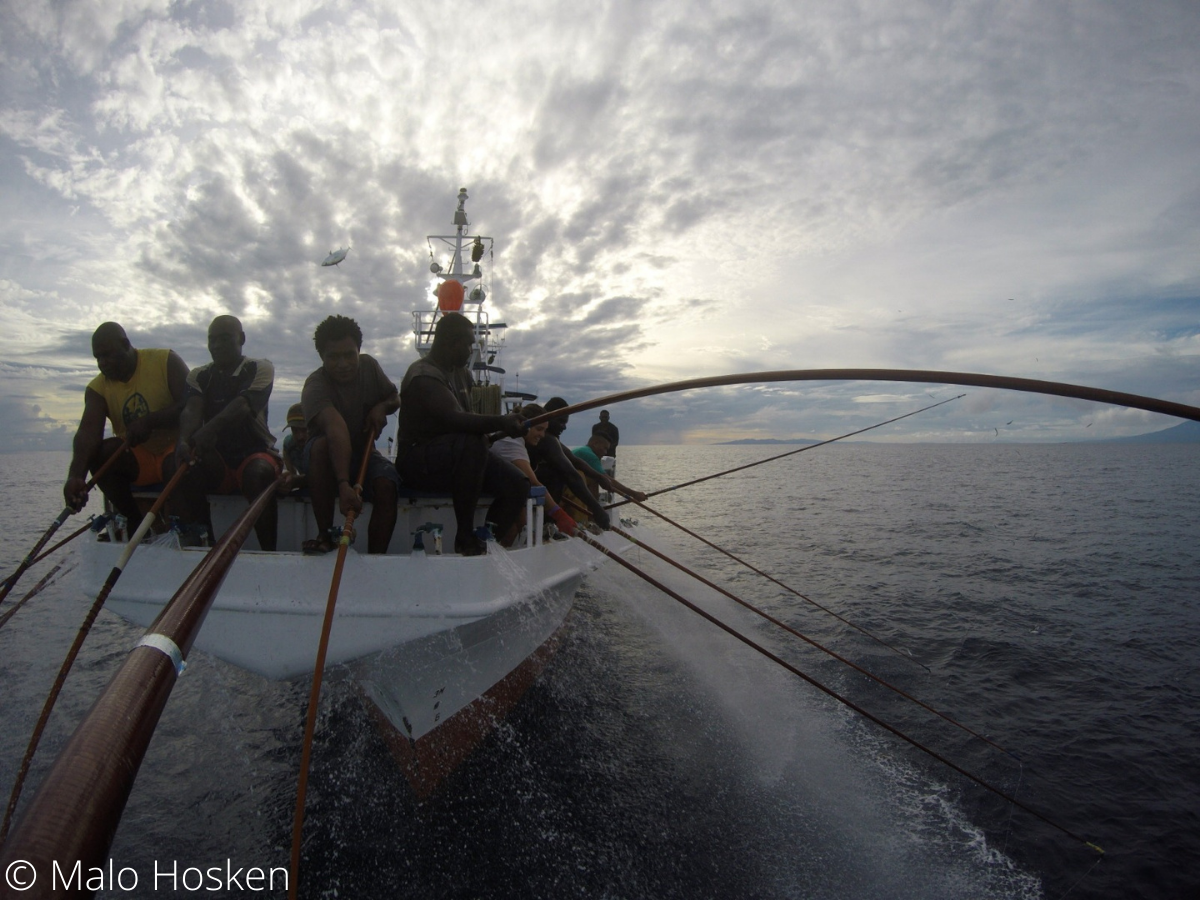
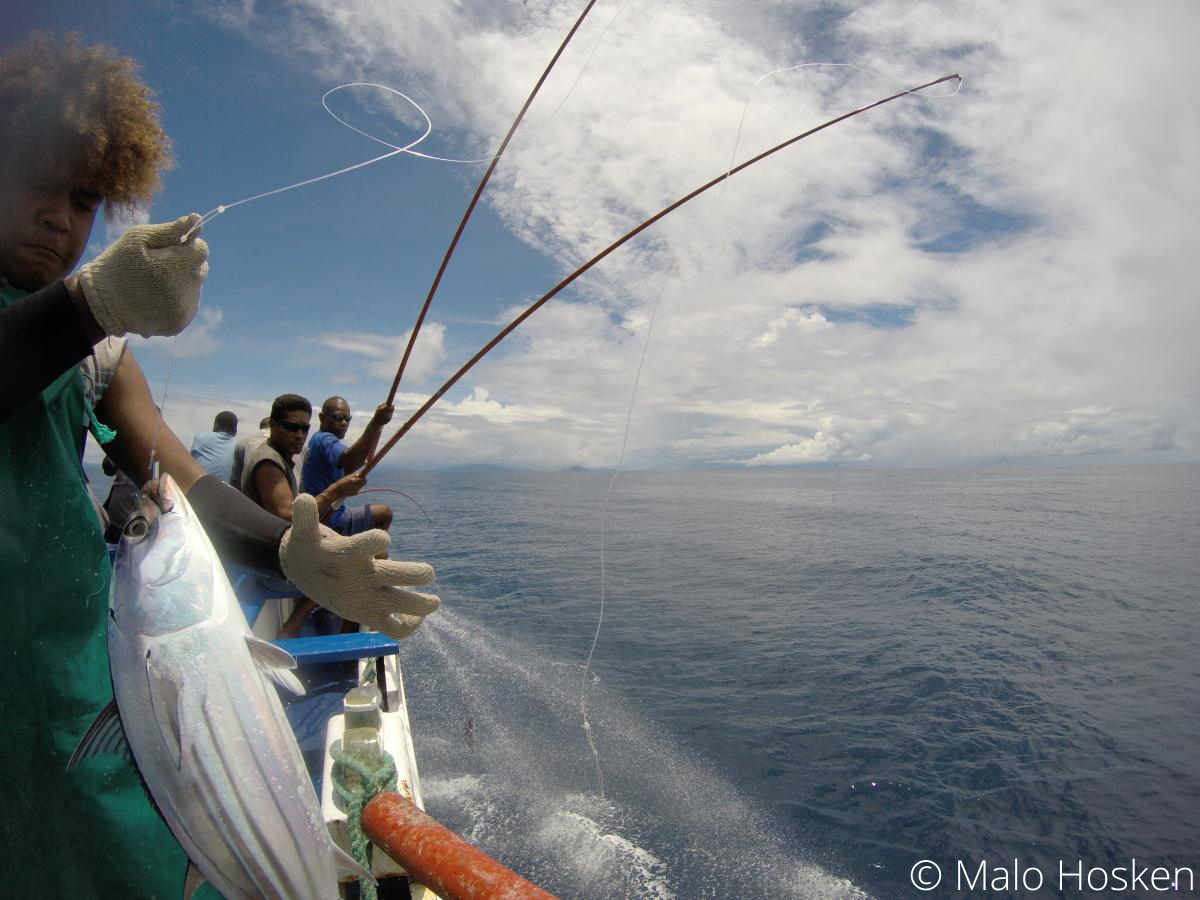
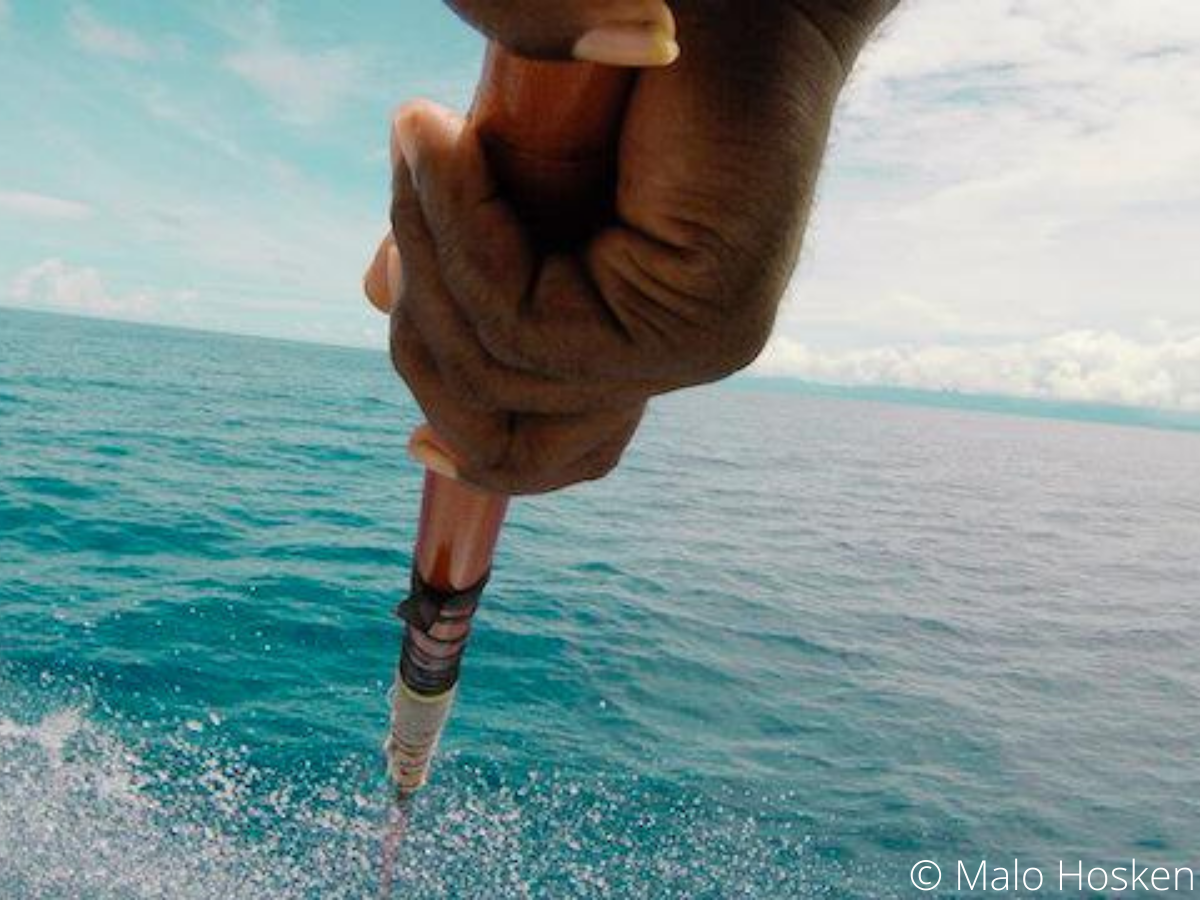

Typical Vessel
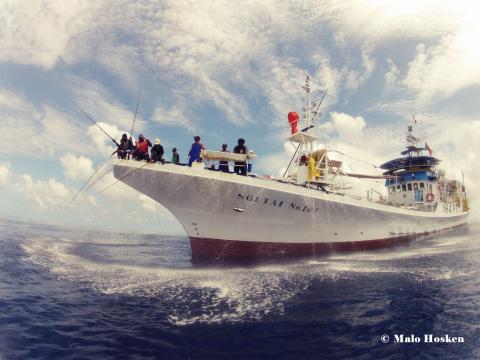
| Item | Value |
|---|---|
| Crew Size | 35 |
| Size Range(m) | 37 |
| Details of Type of Engine | Nigata 6MG 25BX |
Fleet Capacity
-
1389t
- Annual Catch Volume (metric tonnes)
-
10
- Number of Vessels
Target Species
Skipjack Tuna
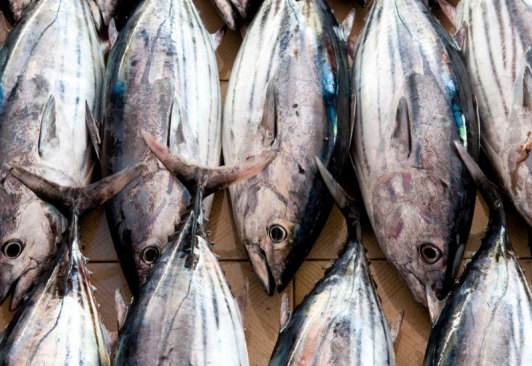
Fishing Gear
Pole-and-line
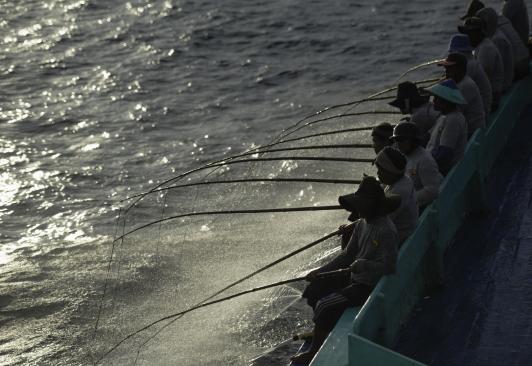
Traceability
Traceability systems are used in food supply chains to track a product from production to consumption. They assist with ensuring that standards and regulations are met throughout the supply chain, which is very important for products that travel across the globe, such as tuna.
Good traceability reduces contamination, disease, and spoilage. In the case of seafood, it also helps to maintain sustainable fish stocks in the oceans so we can keep enjoying tuna for years to come.
Most importantly, traceability provides transparency through the supply chain, allowing all parties including the consumer access to information about the products they are buying.
The skipjack and yellowfin tuna fisheries keep the tuna that was caught via pole-and-line methods separate from the tuna caught using alternative fishing methods.
Find Out More
Regional Fisheries Management Organisation
Western and Central Pacific Fisheries Commission (WCPFC)
Regional fisheries management organisations (RFMOs) are international bodies formed to manage fish stocks in an oceanic area. They include several countries with fisheries operating in that area, and some focus on particular species such as tunas. They are established through international agreements and treaties. RFMOs typically collect fishery statistics, assess fish stock conditions, monitor fishery activity and make fishery management decisions.
The Western and Central Pacific Fisheries Commission (WCPFC) was established by the Convention for the Conservation and Management of Highly Migratory Fish Stocks in the Western and Central Pacific Ocean (WCPF Convention). The Commission seeks to manage issues that arise in high-seas fisheries, to prevent overexploitation of highly migratory fish stocks.
Stock Status Reports
Skipjack Tuna Stock Status
2021-04-25The stock status of a fish species signifies whether a species is 'overexploited', 'fully exploited' or 'underexploited'. Different organisations use different parameters to assign these labels. For example, the Food and Agricultural Organisation of the United Nations (FAO) deems any species to have less than 40% of it’s ‘unfished biomass’ to be overexploited.
The aim of assigning stock status to a species is to ensure that catches are kept at a level where future catches will not be affected, in other words, to maintain a healthy, viable population of fish.
In addition to biomass, spawning potential, catch trend and size-age composition may be used to determine stock status. These are important factors to consider as some species are more resilient than others and have different ecological features. For example, skipjack tuna represent the healthiest tuna stocks globally, and reaching maturity at just 1 year of age they have a high reproductive rate. However, they often aggregate with juvenile yellowfin tuna which are important to avoid as juveniles will not yet have had a chance to breed.
National Reports
Solomon Islands
2022-07-01National Reports are formal documents from members of the Tuna Regional Fisheries Management Organisation (tRFMO) in question. Each country that falls within the tRFMO must report on the state of their national fisheries in relation to the requirements of that tRFMO. They are normally presented to the annual Scientific Committee meetings by a credentialed head of delegation - considered national scientists. The tRFMO normally prescribes what the report should entail and how it should be structured, which would also include progress on key resolutions on conservation and management measures, and brief the ongoing scientific research of interest to the tRFMO.
